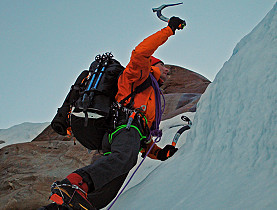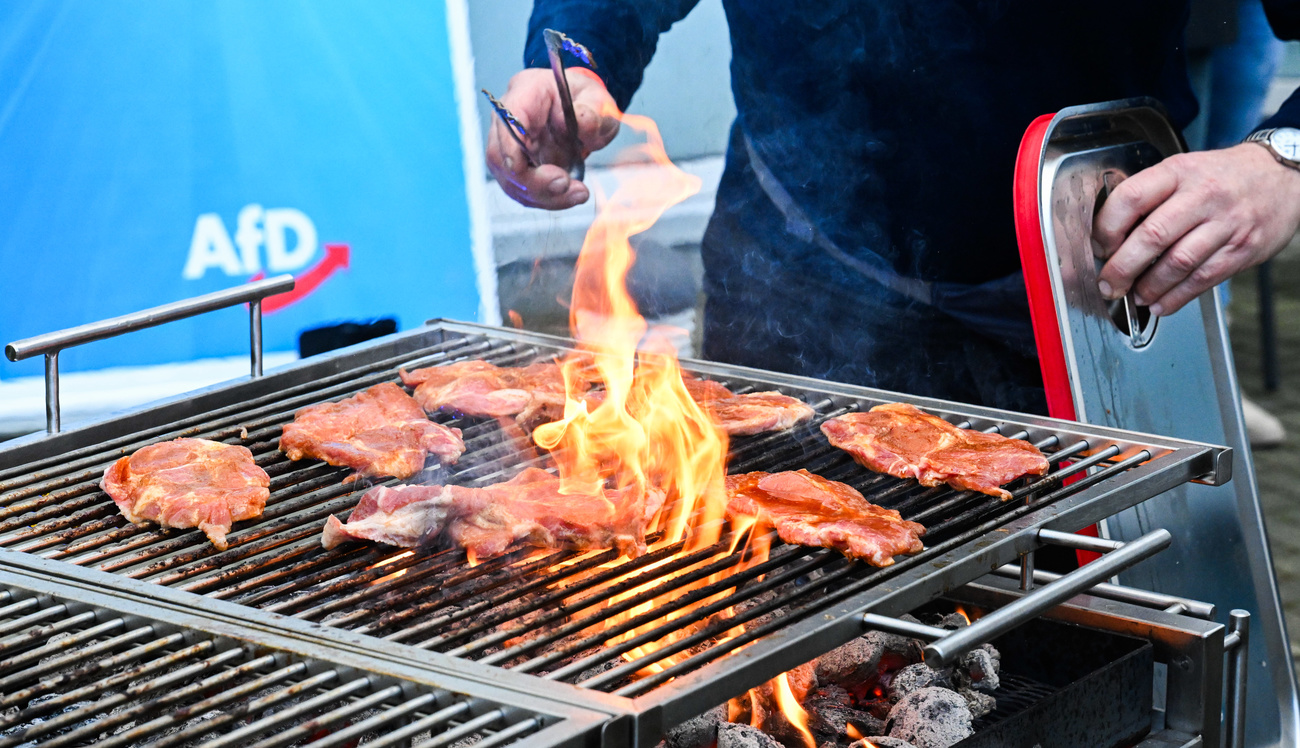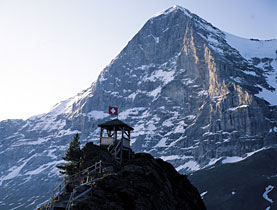Steck returns to deadly Annapurna South Face

One of Switzerland's most accomplished mountaineers is on his way back to the Nepalese Himalayas to face a peak that nearly took his life last year.
Ueli Steck is returning to Annapurna I – the tenth-highest mountain in the world – where he survived a 300-metre fall down a sheer ice cliff in May 2007. swissinfo spoke to him in the Nepalese capital Kathmandu as he prepared to head for the mountains.
This year the soloist has teamed up with compatriot Simon Anthamatten to finish the route first attempted by French climbers Jean-Christophe Lafaille and Pierre Beghin in 1992. That expedition had a tragic end when Beghin fell from 7,100 metres to his death. To this day nobody has completed the route.
swissinfo: You have come back to tackle the South Face of Annapurna where you barely escaped death last year. Did you always know that you were coming back?
Ueli Steck: No, it has actually taken me quite some time to come to terms with my accident. I had to find out what actually happened up there and whether it was due to the dangers of the wall or whether it was just bad luck.
I came to the conclusion that getting hit by a rock was simply bad luck, and this is why I am back and ready to give it another go.
swissinfo: So, you are ready if bad luck strikes again?
U.S.: Mountaineering is all about taking risks and climbing a 3,000-metre-high wall at an extremely high altitude is certainly more dangerous than sitting here by the pool. And if I were not prepared to take that risk then I should not be a mountaineer.
swissinfo: How does your family feel about you going back to Annapurna I?
U.S.: Of course, they have mixed feelings about this particular expedition even though they have always supported me. But they know that mountaineering is my life and they accept that.
swissinfo: And what are your feelings about going back to Annapurna I?
U.S.: I feel very different this time as I have a lot more information about the mountain and the route. I don’t think the accident will hamper my efforts in any way as I would not be here if I did not think it was the right thing to do.
It is like in everyday life: you need closure and if you remember every little glitch in the mountains then you will not be able to carry on mountaineering.
swissinfo: What is so special about this route on Annapurna I?
U.S.: I have been fascinated by this wall for the past three years as it is one of the highest and most difficult faces in the world.
The tough Slovenian climber Thomas Humar tried to solo it last autumn but cold weather and wind forced him back before he could even get started properly. He changed to another route but suffered serious frostbite on his toes and fingers. In a way I am glad he did not successfully climb this particular route as this would have taken my project away from me.
swissinfo: This year you will not be climbing on your own, which is rather unusual as you are normally known as ” the soloist”. How come you teamed up with Simon Anthamatten this year?
U.S.: I considered taking someone along last year but could not come up with anyone suitable. Of course, you have to find someone with a similar attitude and the same level of climbing skills.
When I bumped into Simon shortly after I had come back from my expedition in 2007 I knew he was the right partner for my quest, and when I asked him he said yes immediately.
swissinfo: Simon has never been higher than 6,500m. Don’t you think that could be a problem?
U.S.: No, not at all. I have been to altitude many times and I know how to acclimatise properly. Simon has to rely on me and if he is prepared to follow my guidance we will be fine. High altitude climbing is not actually rocket science, it just requires a certain level of intelligence.
You have to remain calm and go slowly. When climbers see a mountain they normally want to get to the summit as quickly as possible. However, it is different in the Himalayas. In Switzerland I am used to a pretty hectic life but when I am here I get into a different mode.
swissinfo: You are someone who is used to doing things quickly – like climbing the Eiger North Face in two hours and 47 minutes. Do you find it difficult to do things slowly?
U.S.: I used to find it extremely hard, however, now I know that going on expedition is like having a four-week holiday. You sit, you read, you have tea – life is just relaxed until you tackle the mountain. I can really enjoy it now but it took me quite some time to get used to the slow pace.
swissinfo: What is your next project?
U.S.: It all depends on how this expedition pans out. We might just whizz up and down in no time or we could be completely exhausted when we get back. But one thing is for sure: we will need a holiday – mentally and physically –and I will not even think about another project.
swissinfo, Billi Bierling in Kathmandu
The Bernese climber has become known as one of the world’s most extreme mountaineers.
On February 13, 2008 Steck broke his own speed record of 3hrs 54min on the Eiger North Face, when he climbed the sheer wall in 2hrs 47min.
On May 21, 2007 Steck was hit by a rock at an altitude of about 5,500m during his attempt to solo the South Face of Annapurna I. The rock sent him tumbling down the face for about 300 metres.
Annapurna I (8,091m) is the 10th highest mountain in the world and is located in the west of Nepal.
It was first climbed via the North Face by a French expedition led by Maurice Herzog in 1950.
Annapurna I is notorious for its avalanche danger and legendary climbers like Anatoli Boukreev from Russia and Christian Kuntner from Italy died on the mountain.
French climbers Pierre Beghin and Jean-Christophe Lafaille attempted the same route in 1992 but Beghin fell to his death and Lafaille took five days to get down the mountain on his own.
Lafaille died on Makalu (8,463 m) in December 2004 attempting a solo winter ascent.

In compliance with the JTI standards
More: SWI swissinfo.ch certified by the Journalism Trust Initiative










You can find an overview of ongoing debates with our journalists here . Please join us!
If you want to start a conversation about a topic raised in this article or want to report factual errors, email us at english@swissinfo.ch.